
Our Blog
Use our blog as a resource of information pertaining to lawn and landscape maintenance information and services for your properties.

Use our blog as a resource of information pertaining to lawn and landscape maintenance information and services for your properties.
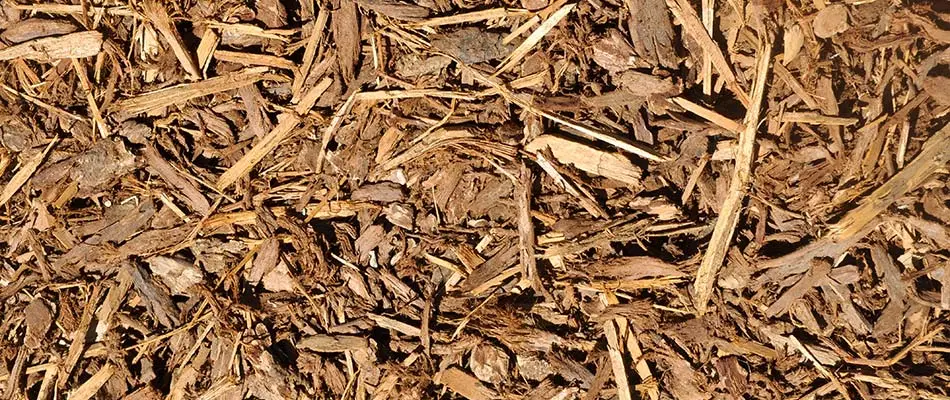
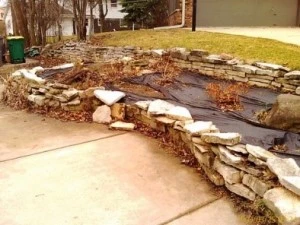 When using mulch in your landscape, there is no need for the use of artificial weed barrier such as plastic or landscape fabric. These materials do not work and are not weed barriers. They are only necessary under stone. That is to prevent the soil from mixing with the stone. When mulch is maintained at an even depth between two and four inches it will properly serve as a weed barrier. Also, the mulch will naturally break down and incorporate with the soil through matters such as earthworms, microorganisms, and other insects. This adds nutrients and organic material to your plants and the surrounding soil which is very important to sustaining the health of your landscape.
When using mulch in your landscape, there is no need for the use of artificial weed barrier such as plastic or landscape fabric. These materials do not work and are not weed barriers. They are only necessary under stone. That is to prevent the soil from mixing with the stone. When mulch is maintained at an even depth between two and four inches it will properly serve as a weed barrier. Also, the mulch will naturally break down and incorporate with the soil through matters such as earthworms, microorganisms, and other insects. This adds nutrients and organic material to your plants and the surrounding soil which is very important to sustaining the health of your landscape.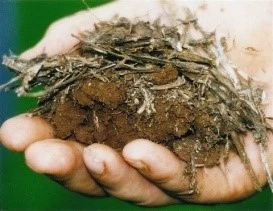 In many cases when artificial material is used under mulch you can clearly see a night and day difference between what is above the plastic and what is below. The material above the plastic is soft, rich, dark, and full of nutrients. The soil below is hard and grey with virtually no nutrients. It looks as if it is suffocated. It also provides no protection against weeds proven by the fact that we see weeds everyday growing through thick layers of concrete and blacktop on commercial property. In the event that weeds do occur in your mulch they are much easier to pick out and maintain when there is not a layer of thick plastic holding them in the ground.
In many cases when artificial material is used under mulch you can clearly see a night and day difference between what is above the plastic and what is below. The material above the plastic is soft, rich, dark, and full of nutrients. The soil below is hard and grey with virtually no nutrients. It looks as if it is suffocated. It also provides no protection against weeds proven by the fact that we see weeds everyday growing through thick layers of concrete and blacktop on commercial property. In the event that weeds do occur in your mulch they are much easier to pick out and maintain when there is not a layer of thick plastic holding them in the ground.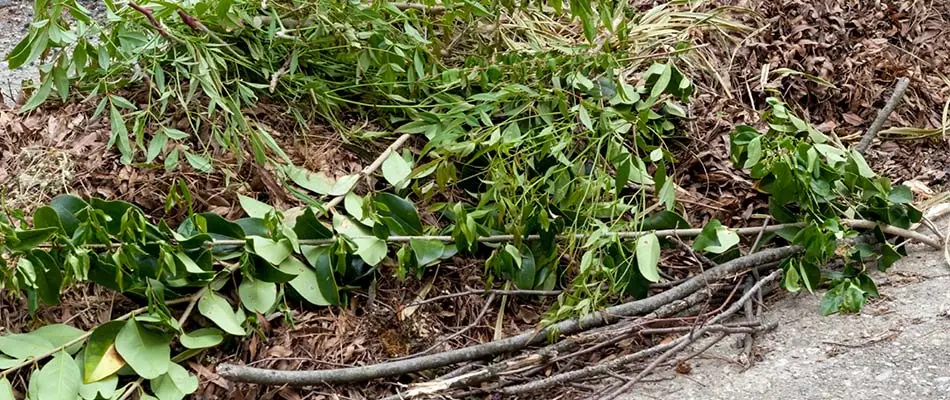
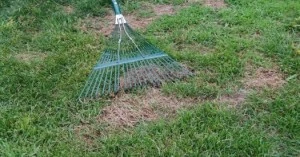 One of the first things to do each season is to start with a good spring clean-up; an all-over clean up and review of your lawn & landscape (including plants, shrubs, trees, and their beds). Fallen branches, debris that has been blown in from the neighbor’s yard, and “gifts” the snow plow delivered (chunks of sod, anyone??) all need to be removed. It is a huge part of maintaining a clean, crisp, great looking landscape.
One of the first things to do each season is to start with a good spring clean-up; an all-over clean up and review of your lawn & landscape (including plants, shrubs, trees, and their beds). Fallen branches, debris that has been blown in from the neighbor’s yard, and “gifts” the snow plow delivered (chunks of sod, anyone??) all need to be removed. It is a huge part of maintaining a clean, crisp, great looking landscape.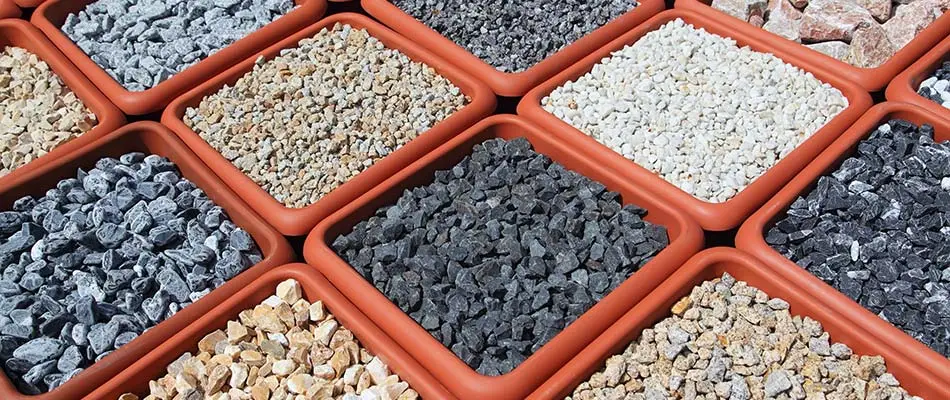
Mulching is an important part to the landscaping, and one of the most beneficial and easiest steps. There are many reasons to mulch around your plants. The first is to retain moisture. Mulch helps to slowly release water into the soil as you water. This allows for greater soil infiltration. This results in even soil moisture levels and a healthier root system. The mulch also helps the soil to keep the water that it does absorb by reducing the amount of moisture evaporating into the air. All in all this makes it easier for you because it reduces the amount of water needed to be applied.
Mulching helps to regulate the temperature of the soil surrounding your plants. It keeps soil cool in the summer, as much as 30 degrees cooler than the air temperature compared to bare soil or soil covered with stone. It also acts as a natural insulator in the winter. It allows for a slower freezing and more uniform temperature to make for less drastic temperature changes and prolongs the plant life.
Mulch can come in many forms. They can be organic or inorganic materials. Organic materials are ones in which they used to be a living plant form (i.e. bark nuggets, shredded wood chips, pine needles, and hay or straw). Inorganic materials include anything that would be considered man made. The natural or organic materials are best because they naturally decompose to add nutrients to the soil beneath. These nutrients are carried deep into the root systems by earthworms. These earthworms also ...
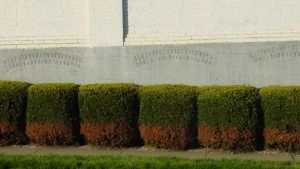 Road runoff contains dissolved salts that not only injure plants directly but also can change the structure of the soil, causing it to become compacted. This condition restricts the nutrients, water,and oxygen available to the plants, putting them under stress. Shoot tips and young leaves usually receive the most damage. One of the salt-damage-bigsymptoms of salt damage is dried, burnt leaf edges.
Road runoff contains dissolved salts that not only injure plants directly but also can change the structure of the soil, causing it to become compacted. This condition restricts the nutrients, water,and oxygen available to the plants, putting them under stress. Shoot tips and young leaves usually receive the most damage. One of the salt-damage-bigsymptoms of salt damage is dried, burnt leaf edges.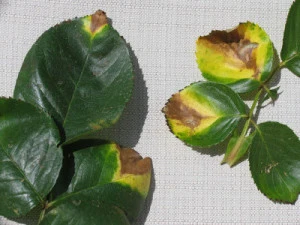 How do I prevent it? Salt burn has a simple solution. Don’t pile snow containing salt around plants or trees or put it where runoff might reach plant roots. Ask road-maintenance workers if they can direct salty runoff away from your property. When selecting species for a new roadside planting, minimize the potential for salt damage by planting salt-tolerant selections. Install a low wall or hedge of salt-tolerant evergreens, which can deflect salt spray away from sensitive plants nearby.
How do I prevent it? Salt burn has a simple solution. Don’t pile snow containing salt around plants or trees or put it where runoff might reach plant roots. Ask road-maintenance workers if they can direct salty runoff away from your property. When selecting species for a new roadside planting, minimize the potential for salt damage by planting salt-tolerant selections. Install a low wall or hedge of salt-tolerant evergreens, which can deflect salt spray away from sensitive plants nearby.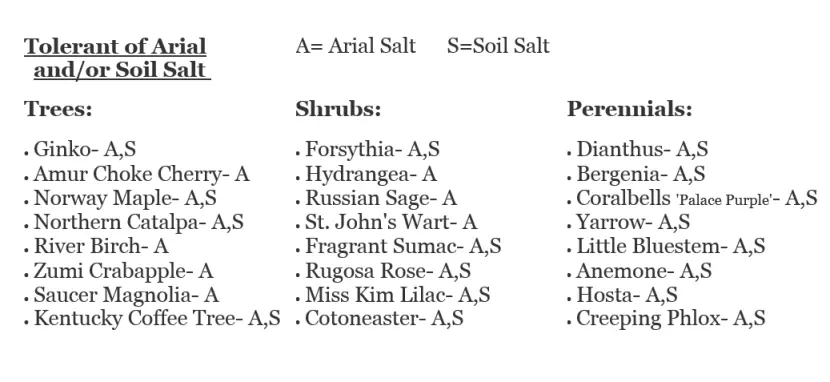
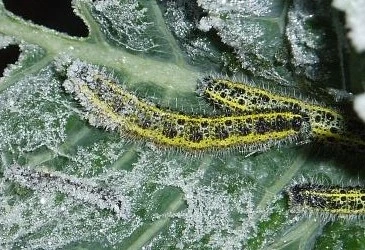 Does a warmer winter mean more pests to manage during spring and summer? Actually, there are a few other factors to consider before concluding this theory.
Does a warmer winter mean more pests to manage during spring and summer? Actually, there are a few other factors to consider before concluding this theory.
 Most insects adapt to cold winters by slowly preparing in the fall and staying dormant until the spring. Therefore, large temperature swings can be detrimental to insects… (There was at least one day this winter, from what I remember, where the temperature dropped a total of 50 degrees within just two days!). We could expect some insect mortality due to cold intolerance when regularly fluctuating from 0-50 degrees.
Most insects adapt to cold winters by slowly preparing in the fall and staying dormant until the spring. Therefore, large temperature swings can be detrimental to insects… (There was at least one day this winter, from what I remember, where the temperature dropped a total of 50 degrees within just two days!). We could expect some insect mortality due to cold intolerance when regularly fluctuating from 0-50 degrees.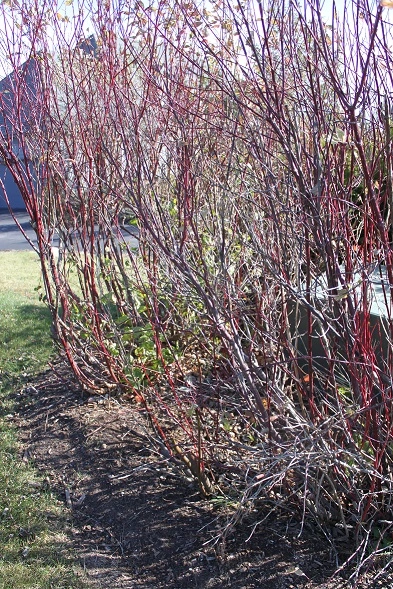 Pruning deciduous plants while there are no leaves on the plant allows us to see the complete framework of the plant and do a thorough job of pruning. We will work through the winter season to do this work. The cost for pruning a shrub or ornamental tree is far less than the cost of replacing an overgrown tree or shrub in the future–pruning is a necessary task in the maintenance of an ornamental landscape and should be done every 1-5 years depending on the plant species. Corrective pruning or rejuvenation pruning is just that–it is to correct mismanaged plants or to reinvigorate them by removing a substantial amount of growth. This drastic measure may be needed initially, but not as an ongoing part of a sustainable landscape management program. Contact us for a full property review (free)– Be aware of anything that needs attention!
Pruning deciduous plants while there are no leaves on the plant allows us to see the complete framework of the plant and do a thorough job of pruning. We will work through the winter season to do this work. The cost for pruning a shrub or ornamental tree is far less than the cost of replacing an overgrown tree or shrub in the future–pruning is a necessary task in the maintenance of an ornamental landscape and should be done every 1-5 years depending on the plant species. Corrective pruning or rejuvenation pruning is just that–it is to correct mismanaged plants or to reinvigorate them by removing a substantial amount of growth. This drastic measure may be needed initially, but not as an ongoing part of a sustainable landscape management program. Contact us for a full property review (free)– Be aware of anything that needs attention!
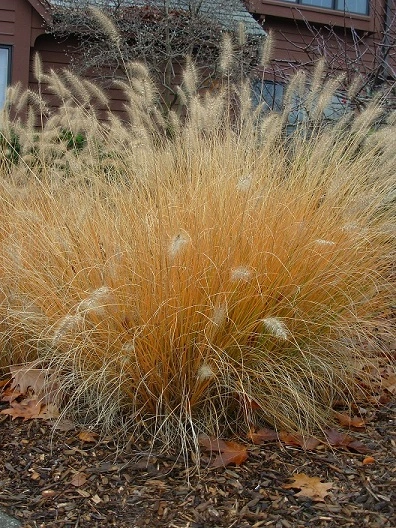 Many perennials are better left standing over the winter than cutting them down. There are several reasons for this. In addition to many of the perennials having attractive foliage and/or seed heads, they offer food resources for birds. Many birds find the seeds of perennials particularly tasty. The stems of perennials also offer a place for some birds to hide during the winter. With some marginally hardy perennials, leaving the stems up for the winter aids in overwintering. The foliage helps to insulate the crowns. Mums seem to benefit a great deal from this practice. Another reason to leave stems stand is that if the perennial is a late riser in the spring, the stems will help to mark the spot and prevent any accidental digging in the area that might harm the underground portions of the plant.
Many perennials are better left standing over the winter than cutting them down. There are several reasons for this. In addition to many of the perennials having attractive foliage and/or seed heads, they offer food resources for birds. Many birds find the seeds of perennials particularly tasty. The stems of perennials also offer a place for some birds to hide during the winter. With some marginally hardy perennials, leaving the stems up for the winter aids in overwintering. The foliage helps to insulate the crowns. Mums seem to benefit a great deal from this practice. Another reason to leave stems stand is that if the perennial is a late riser in the spring, the stems will help to mark the spot and prevent any accidental digging in the area that might harm the underground portions of the plant.Things to do to prepare your plantings for winter–
* If you have a young tree, protect the trunk with a plastic sleeve or wire guard. This will protect against deer rubbing their antlers on the trunks and shredding the bark.
* Plants that may be favored by deer should be wrapped with a deer net. The most common are Yews, certain Viburnum, Oak Leaf Hydrangea, young Magnolia trees/shrubs, young Burning shrub, to name a few.
* Anti-desiccant spray–this is a liquid spray applied to evergreens to help them preserve moisture and protect them from winter wind burn.
* Mulching–apply mulch at the base of first year roses and perennials. Often, you can rake mulch from the surrounding area–new mulch is not necessarily needed. This helps to moderate soil temperature fluctuations–especially when there is little/no snow on the ground.
* Repellent–we are fans of Bobbex. This is an effective way at deterring deer, rabbits, and voles. Reapply about every 6 weeks–take advantage of periods of “thaw” to do the reapplication.
* Deep root fertilization–this can be done a number of ways. We recommend applying Milorganite (also deters deer) around the base of plants in the fall (now), drenching the soil with compost tea, or having fertilizer and bio-stimulants injected into the soil. All of these...
 Congratulations! You have just made a significant investment to your yard, and to your life, by installing new plant material. To ensure that investment is productive and successful, you need to nurture it, just like any other investment, making sure you do all you can to help it pay-off. So, now what?
Congratulations! You have just made a significant investment to your yard, and to your life, by installing new plant material. To ensure that investment is productive and successful, you need to nurture it, just like any other investment, making sure you do all you can to help it pay-off. So, now what?
Watering – not enough or too much – is the most important step in establishing new plants. Beautiful Blooms will always “water-in” all the plant material they install for you. However, once we leave the property, you become responsible for seeing that adequate moisture is supplied. Knowing when and how much to water – and conversely, when not to water – can be tricky, so we offer these guidelines.
Perennials: It is recommended that you water 3 times-a-week, for the first 3 weeks whether is rains or not. After 3 weeks, water once-a-week, unless there is at least ½ inch of rainfall during that week. If natural rainfall is not sufficient, then supplemental, regular watering is needed. Remember that plants dry out faster in windy, unprotected areas, as well as on slopes. Also, pay close attention to plants placed under a roof overhang; they will need slightly more water since the soil in that area tends to be drier as it does not receive any rain.
Small shrubs: You should use a hose at a slow trickle for 10-20 minutes per shrub to thoroughly saturate the root zone. You will want to keep the water at the ...
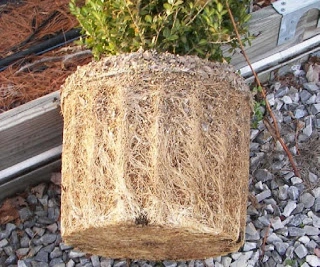 This spring my wife and I started to convert the expanse of lawn around our newly purchased ranch house into gardens. While we focus on renovating the insides of the house, the focus for our garden is its infrastructure and bones. To that end, we’ve been smothering several hundred square feet of lawn under cardboard, newspapers, and compost; planting young shrubs to create screens; carefully carving specimens out of overgrown trees; and generally preparing the soil for future garden spaces. Last week we installed several hundred perennials and grasses on the side of our house. During that planting, I remembered the best planting advice I’ve ever received.
This spring my wife and I started to convert the expanse of lawn around our newly purchased ranch house into gardens. While we focus on renovating the insides of the house, the focus for our garden is its infrastructure and bones. To that end, we’ve been smothering several hundred square feet of lawn under cardboard, newspapers, and compost; planting young shrubs to create screens; carefully carving specimens out of overgrown trees; and generally preparing the soil for future garden spaces. Last week we installed several hundred perennials and grasses on the side of our house. During that planting, I remembered the best planting advice I’ve ever received.
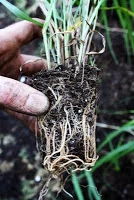 The advice focused on techniques of installing container plants. The big problem with container plants is that they get root bound. Roots naturally grow out and down (mostly out) away from the plant. When the roots of a plant in a pot reaches the wall of a pot, it has nowhere to go and will begin circling the perimeter of a pot over and over again. Almost any gardener who has...
The advice focused on techniques of installing container plants. The big problem with container plants is that they get root bound. Roots naturally grow out and down (mostly out) away from the plant. When the roots of a plant in a pot reaches the wall of a pot, it has nowhere to go and will begin circling the perimeter of a pot over and over again. Almost any gardener who has...Just complete the form below to get a pricing quote.
